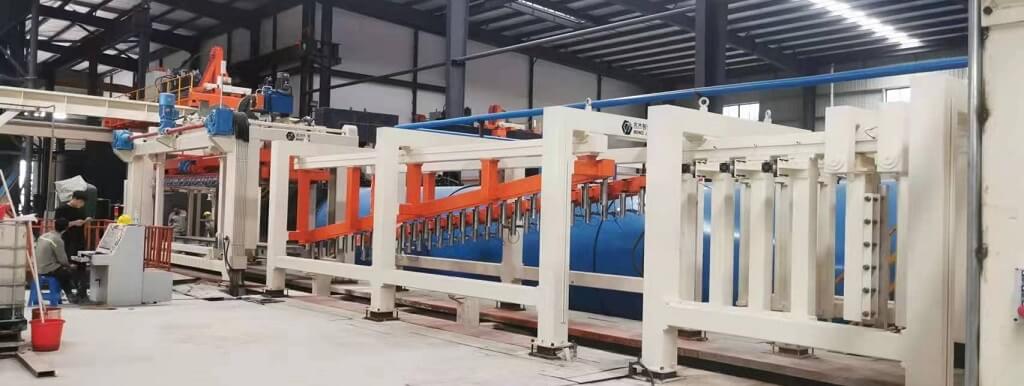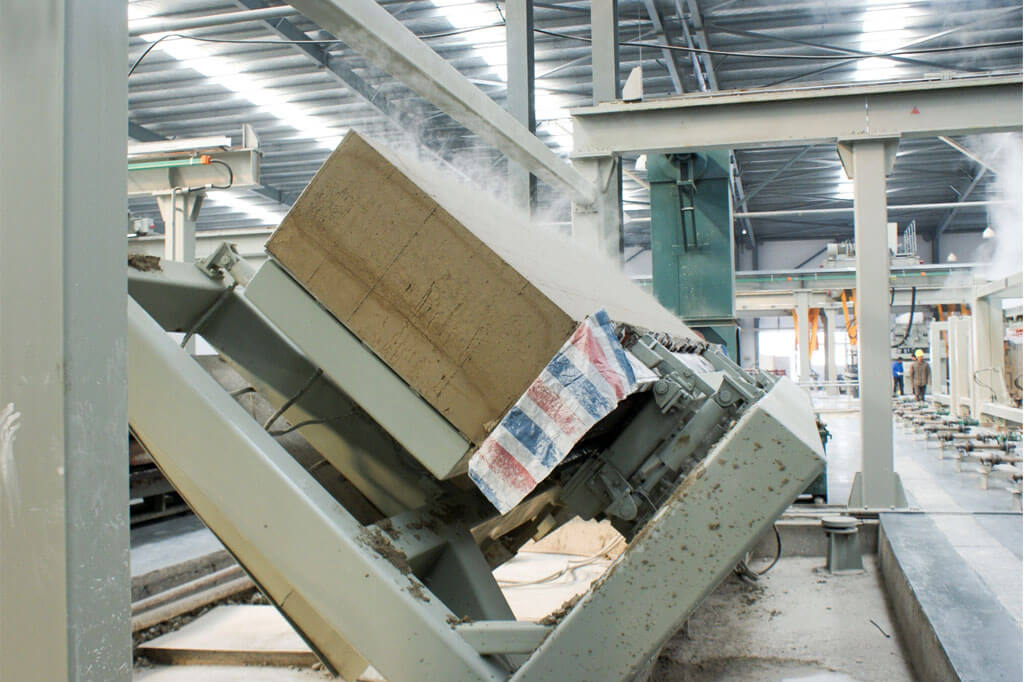The AAC block manufacturing process involves a sequence of carefully orchestrated steps, each contributing to the creation of a lightweight, high quality, and energy-efficient building material. This article delves into the intricate journey of AAC block production, encompassing raw material preparation, batching and pouring, precuring and cutting, autoclaving, and finally, the packaging section.
Raw Material Preparation: The Foundation of Quality
The first crucial stage in the AAC block making process is the preparation of raw materials. The primary constituents of AAC include fly ash or silica sand, cement, lime, water, and a small amount of aluminum powder. The selection and quality of these materials directly impact the properties of the final product.
The raw materials are carefully measured and blended to create a homogeneous mixture, setting the foundation for high-quality AAC blocks.
Batching & Pouring: Precision in Composition
Once the raw materials are prepared, they are precisely batched according to a predetermined recipe. This stage ensures consistency in the composition of the mixture, which is crucial for achieving the desired physical and mechanical properties of the AAC blocks. The mixed materials are then poured into molds of various sizes and shapes, allowing for versatility in construction projects.
If necessary, the molds can be equipped with reinforcing steel, adding to the structural integrity of the finished product.
Precuring & Cutting: Nurturing Strength

After pouring, the AAC mixture undergoes a precuring phase. During this period, the mixture gains initial strength through a chemical reaction known as hydration. This strength development sets the stage for the next cutting section. The precured blocks are removed from the molds and cut into precise dimensions using AAC cutting machines.
The cutting process ensures accuracy in size, shape, and surface flatness, while also exposing the porous internal structure that gives AAC blocks their lightweight nature.
Autoclaving: The Magic of Steam-Curing
The hallmark of the AAC production process is its autoclaving phase. The precured blocks are loaded into autoclaves, which are high-pressure chambers that facilitate steam-curing. This step triggers a chemical reaction between the aluminum powder and the alkaline materials, creating countless tiny air bubbles throughout the material. These air bubbles significantly enhance the material’s thermal insulation properties while maintaining its structural strength.
The steam-curing process typically takes several hours, during which the AAC blocks gain their final strength and unique cellular structure.
Packing: Ready for Construction
Once the autoclaving process is complete, the AAC blocks are inspected for quality and consistency. They are then packaged and prepared for distribution to construction sites. Due to their lightweight nature, AAC blocks are easy to handle and transport, contributing to reduced transportation costs and energy consumption. Their precise dimensions also simplify the construction process, resulting in shorter construction times.
In Conclusion
The AAC block manufacturing process is a symphony of carefully orchestrated stages that result in a sustainable, energy-efficient, and high-performance construction material. From the preparation of raw materials to the final packaging, every step plays a pivotal role in ensuring the quality and characteristics of AAC blocks.

